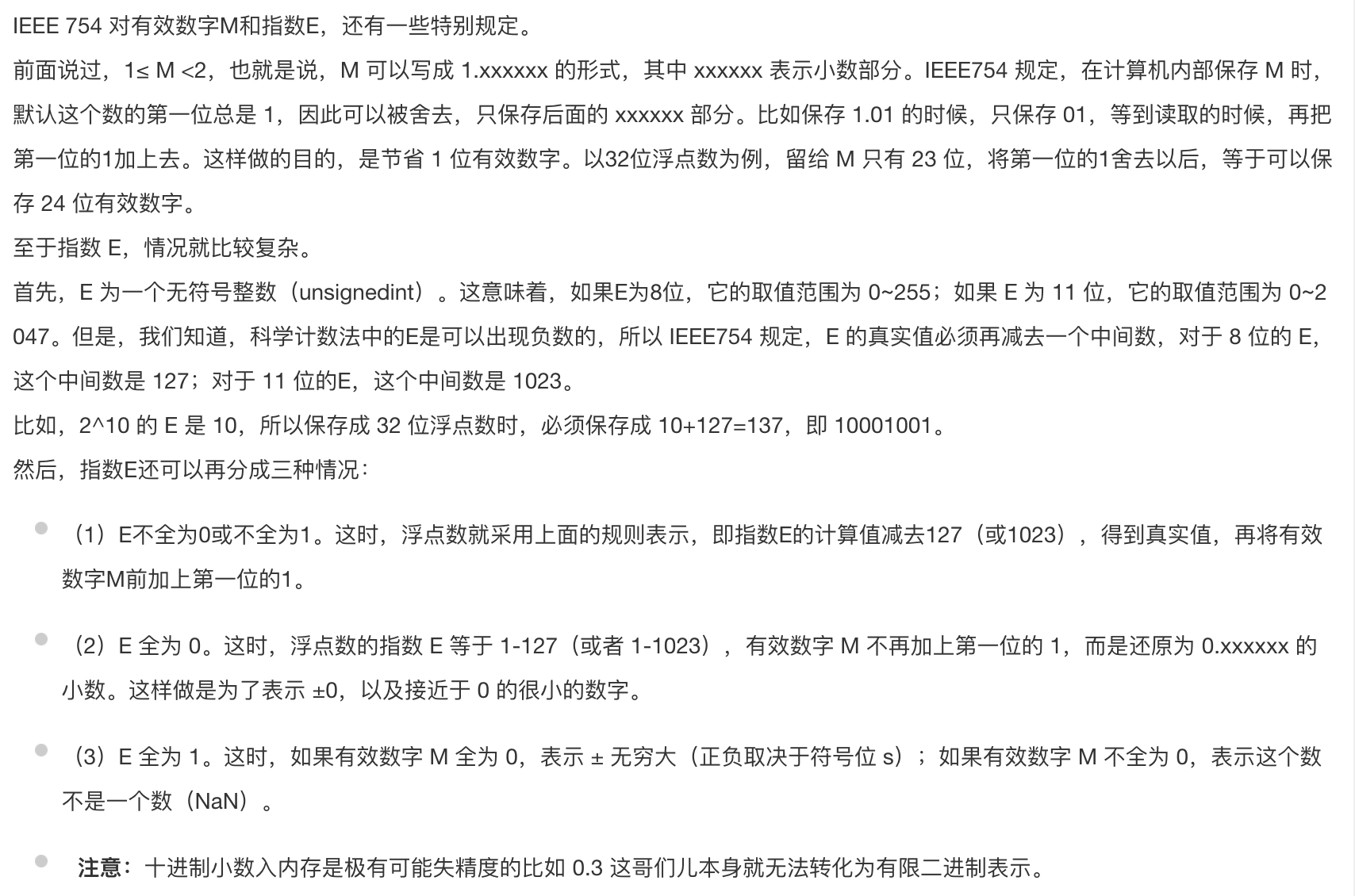About Float32 and Float64


Any number should be represented in the form of the formula above:
(-1)^s: s is the sign bit
M: M is the fraction bit
E: is the exponential bit
1. Float32
Float32 has 1 bit for s, 8 bits for E, and 23 bits for M
Example: For 5.0 in decimal, it is 101 in binary, so we can write it as 1.01 * 2^2, thus s=0, M=1.01, E=2

Example:
 Float32 of 3
Float32 of 3
 Float32 of 5
Float32 of 5
2.Float64
Float64 has 1 bit for s, 11 bits for E, and 52 bits for M
Reference:
https://www.binaryconvert.com/result_float.html?decimal=053
https://www.runoob.com/w3cnote/32-float-storage.html
https://www.cnblogs.com/zhibei/p/13255701.html




